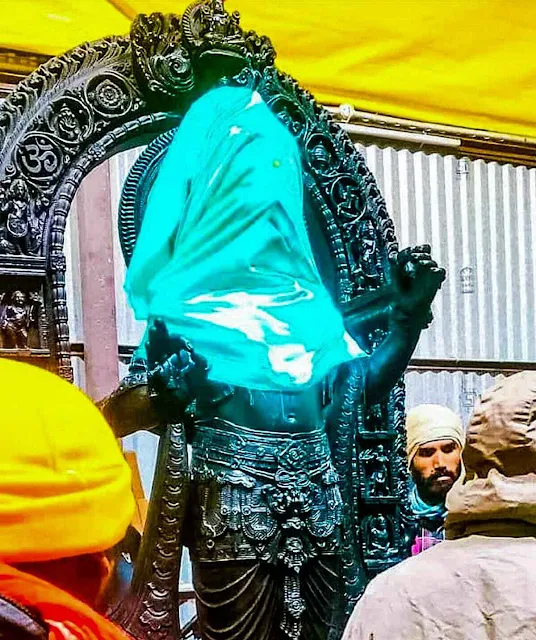In a remarkable convergence of faith and science, a new Rama idol, destined for the sanctum sanctorum of the Ayodhya temple, has been carved from a rock estimated to be a mind-boggling 3 billion years old, making it the oldest rock used for such a purpose in South India. This revelation comes courtesy of Dr. C. Srikantappa, a retired professor of Earth Sciences at the University of Mysore, who has analyzed the stone using geological and geochronological techniques.
 |
| (Credit: VHP media in-charge via ANI) Ram Idol Carved from 3-Billion-Year-Old Rock |
Read More: PM Modi Inaugurates Ayodhya Ram Mandir on Razed Babri Mosque Site
The idol, crafted by renowned sculptor Arun Yogiraj, depicts the infant Rama, fondly known as Ram Lalla. The chosen stone, a type of gneiss, hails from the Sargur Schist Belt near Mysuru, a region known for its ancient rock formations. Dr. Srikantappa, who has extensively studied the geology of this area for over three decades, explains, "U-Pb isotopic studies of zircon grains in the gneissic rocks reveal an age of 3 billion years, making them the oldest exposed rocks in southern India. This specific rock, therefore, carries within itself a whisper of Earth's deep past."
Read More: ISRO Captures Dazzling Image of Ayodhya Ram Temple from Space, Unveiling its Grandeur
Read More: Perth to Become Home to World's Tallest Ram Temple, a 721-Foot Monument to Hindu Culture
Learning about this ancient connection has made people even more amazed by the idol, which was already highly revered for its religious significance. Devotees see the use of such a timeworn stone as a symbol of Rama's enduring legacy, his story etched not just in texts and traditions but also in the very fabric of the Earth. The sculptor, Yogiraj, echoes this sentiment, stating, "To work on a material that predates even the dinosaurs, to breathe life into it, is a humbling and profound experience."
Dr. Srikantappa thinks if he studies the stone properly, then it could offer an accurate and deep understanding of early history of earth, including how it was created and how it has evolved. Dr. Srikantappa believes this groundbreaking discovery might encourage more research into the geological history of the area. "It's a unique case where a sacred image has been carved from a rock that has witnessed eons of geological history," Dr. Srikantappa stated. "This idol not only represents faith, but also serves as a tangible link to our planet's ancient past."
The Ram Lalla idol, carved from a stone that witnessed the dawn of life on Earth, is more than just a religious icon. It stands as a testament to the enduring power of faith, the timeless beauty of art, and the silent echoes of history whispering from the very ground we walk on.



.jpg)

%20(1).jpg)

0 Comments
Do Share Your Views